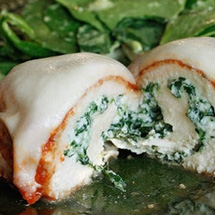No Elmer’s School Glue or scissors required! Just a mouse and a simple art program on your computer can create some wild and fantastic artwork.
This instinct-based, haphazard-looking way of making art is not really new–think of Jackson Pollock’s artwork–but doing it digitally instead of with a paintbrush and palette is a little newer. No longer are we constrained by the tools we can buy or the paint colors we can find–you can create any color and use almost any type and texture of brush. You can even cut pieces out of your picture and put them somewhere else without hurting the canvas! Check out the process below:
The Process of Making a Cut-and-Paste Digital Artwork
(In the following demos, I’m using Microsoft Paint.)

Start with a blank white canvas, sized however you like.

For this art piece, I dye the background completely black. You can choose to dye the background any other solid color or make a pattern in the background if you wish, too.

I use “Calligraphy Brush 2”, at the widest width available, and choose the basic bright red available by default from the Paint palette. Then I paint rather randomly and haphazardly all over the canvas.

Then I choose the default yellow, again with the wide Calligraphy Brush 2, and paint randomly again, trying to cover different areas from the red, and a little less than the red.

Then I take Turquoise from the default palette and paint once again, still trying to cover different areas from the yellow and red streaks.

Now, I choose the “Select” tool, with a rectangular shape instead of the free-form shape, and cut out a small, nearly square shape from the piece. Then I move the cut-out piece just a little down and to the right, to reveal a white corner edge.
I follow the same procedure (except moving the cut piece down and to the left) with the second cut piece, below:


You can also resize one of your cutout pieces if you like–here, I’ve resized the bottom-left cutout piece to be much larger than its original size. It makes it almost pop out in 3-D, to my eye!
You could leave it like this if you like the white part of the picture; in my case, I want to recolor those white parts black again, to match the background.

This is a look I’m happy with, but you could also dye the background to match one of the other colors you’ve included in the picture. A shot of solid red, yellow or blue in this picture, for instance, would be striking!

This is my finished example. Yes, I know, it might look a little kiddy still, but I just wanted to show you the technique with as different a trio of colors as possible.
Other Examples of Color and Cut-and-Paste
If you like this haphazard abstract look but don’t want a ton of bright colors, you can also do something like these:

Here, I’ve used a gray background, with turquoise, pale blue, white, and purple sprays on top instead of the Calligraphy Brush. Then, I used the free-form selection tool to cut out and move some shapes to create sinuous and strange lines within the piece. At bottom right, I blew up one of the small shapes to a larger size.

In this piece, I used first a rose-pink Watercolor Brush across a sand-colored background, then added pale yellow Natural Pencil, then a creamy Calligraphy Brush on top. I didn’t cut anything out from this piece because it looked fine the way it was.
Doing Something More with Your Creations
If you have access to a more sophisticated graphics editing program, like Photoshop or Paint Shop Pro, you can do all kinds of fun stuff with these types of creations. (I used Photoshop Elements 8.0 for the following edits.)
Look at the two different looks I created out of my example piece, just by Motion Blurring it in two different directions:

Motion Blur going down from left to right brings out a lot of the blue lines and makes the red and yellow fade a little more. Reminds me of a ribbon dancer’s movements!

Motion Blur going up from left to right brings out a lot of little red and yellow streaks, almost like shooting stars.

I used the Liquefy filter to swirl these colors and sinuous shapes together. I know it doesn’t look like much right now, but this technique is all about seeing potential. This, for instance, could be useful as the beginnings of a website header (a little more blurring, cropping, and some text in a beautiful font and color, perhaps?).

I used the Paint Daubs filter, increased the width of the brush, and changed the brush to “Sparkle” to create this effect. The creamy swirls almost look like rippled water reflections on the bottom of a pool.
Summary
This kind of art requires us to be instinctual in our process. Choose the colors and shapes we like most in this moment, and just start going at the canvas until you have something beautiful. And if you don’t have something beautiful at the end, no worries about wasted paint or wasted canvas–you can just hit the “New” button and start again!


















































